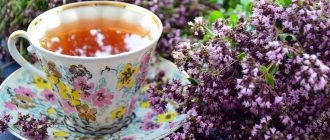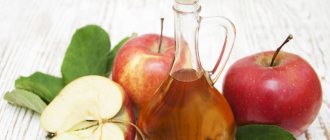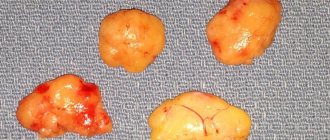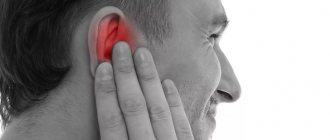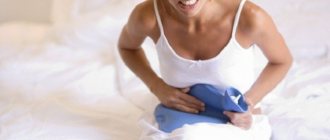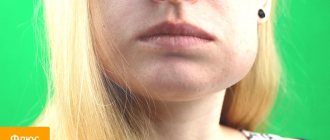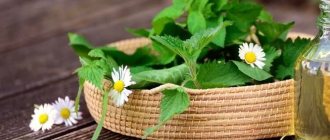Occipital pain
Pain in the occipital part of the head most often occurs in the presence of cervical osteochondrosis or high blood pressure. It’s easy to feel better if you use the following methods:
- provide fresh air access to the room;
- lie down and take a comfortable position, completely relax;
- place a cold compress on the forehead;
- take a hot water bath for your feet;
- massage the head and neck;
- put mustard plasters on the neck and temples, use a bath or dry mustard for the heels;
- massage your earlobes.
Causes of headaches in humans
A headache is not a disease, but a sign to a person that not everything is in order in the body. It doesn't have any specific reason. The origin of headaches depends on their severity, duration and concentration.
The causes that influence the occurrence of headaches are:
- Stress, nervous and psychological stress. Most often, the pain does not last long and is caused by vasoconstriction;
- Heavy use of alcohol and tobacco, colds or infections. The pain is dull and widespread throughout the head;
- Pain in the back of the head or in the area of the frontal bone indicates the presence of rheumatism in the spine and neck;
- High blood pressure, allergies, stress on the eyeball, intoxication, medications, sounds, reaction to weather conditions, heat or sunstroke, damp air and others.
The presence of regular pain in the head indicates a serious illness of a person. If you have such constant pain, you should definitely visit a therapist and undergo an examination.
Dizziness and remedies for it
The very first action when dizziness begins is to lean on something, sit down or lie down. Otherwise, there is a high risk of falling and serious injury. You can do a massage that starts from the neck and reaches the ear area. At the same time, the head leans forward.
If attacks occur frequently, then you should not rely only on the help of folk remedies. It is necessary to reduce the load and seek advice from your doctor.
The main remedy for treating dizziness is herbal infusions. To prepare the infusion, you need to take mint, lemon balm, prepare a decoction from them, which then mix with valerian root. Take one tablespoon up to three times a day. It is suitable for women experiencing headaches during menstruation and menopause.
Another proven remedy is a mixture of grated ginger root and lemon balm decoction, which is infused for 20 minutes. Take the infusion twice a day, one tablespoon. A mixture of honey, vinegar and solutions of valerian, lemon balm and chamomile works well against dizziness. The infusion of oregano should be taken for two weeks.
There are other traditional methods of treating headaches.
Treatment methods for dizziness
Before you begin treatment for dizziness, it is necessary to identify the cause. There are a large number of factors and methods of alternative treatment for dizziness.
Factors that cause dizziness are:
- stress;
- poor nutrition;
- smoking;
- taking pharmaceuticals;
- neuralgia;
- infections;
- osteochondrosis;
- arterial pressure.
Treatment for dizziness can be done at home. If this is associated with stressful situations, then physical therapy without stress and water treatment are recommended.
To localize an attack of dizziness, you can perform a simple massage. To do this, using circular movements and gentle pressure, you need to massage the area around the nose, inner eyebrows, above the upper edges of the ears, and earlobes.
An ordinary onion can help with dizziness. To do this, you need to cut it in half and rub it on your temples.
We recommend reading: How to raise blood pressure at home, folk recipes that are suitable even for pregnant women
If dizziness occurs regularly, then you need to eat one teaspoon of dried seaweed.
If you feel dizzy, you can eat a piece of chocolate or sugar with two drops of anise oil dripped onto it.
If you feel dizzy, you can take a small piece of ordinary mustard plaster and put it on the bridge of your nose or calves. In this case, you need to lie down comfortably, relax and close your eyes.
Use of essential oils
The ability of essential oils to have a beneficial effect on the human condition has been noticed for a long time. They are used for therapeutic purposes when it comes to migraines, stress, etc.
Thanks to the use of essential oils, blood vessels dilate, the quality of cerebral circulation improves, and spasms are reduced.
In practice, lavender, lemon, eucalyptus, and mint are often used. Throbbing pain is relieved with thyme and lemon balm oils; ylang-ylang and chamomile give good results. If we are talking about narrowing of the lumen of blood vessels (atherosclerosis), then headaches of this nature are treated with garlic and rosemary oils. Juniper and black pepper oils are also used.
Often headaches are accompanied by nausea, which can be relieved with peppermint or ginger. Fainting conditions are treated with tea tree, nutmeg, geranium and pine oils. To get the desired effect, no more than 8 drops are needed, and the liquids are used both individually and in combination with each other.
There are several options for using oils:
- candles, aroma lamps and inhaler;
- baths with the addition of various compositions;
- massage and rubbing of painful areas using an oily liquid;
- applying compresses.
Treatment with metals
Another alternative way to combat headaches is metal therapy. In this case, copper is used, which can “draw out” inflammation, improve the functioning of brain vessels, and normalize blood pressure. The therapy involves applying copper coins to painful areas - temples, back of the head, forehead. The duration of one procedure is 15 minutes.
Copper water is also prepared. To do this, take a few coins, fill them with water (one and a half liters), boil until the amount of water is reduced by half. Compresses and lotions for headaches are made from the prepared water. Water for drinking is prepared in a different way - take a copper container, fill it with water, cover it with a lid and leave it overnight. From the next day, you can drink the resulting copper water one teaspoon before meals (3-4 times a day).
Effective headache remedies
• For headaches, prepare smelling salts: pour 1 glass of fine table salt into a porcelain cup, add 4 drops of unrefined sunflower oil, 5 drops of lavender essential oil and one drop each of lemon, mint and nutmeg oil (buy essential oils at the pharmacy) - that’s all. Stir together well so that the salt absorbs the oils. Pour the salt into a dark glass bottle with a tight lid. During a headache attack, take a few breaths through both nostrils, and the pain goes away. • To avoid triggering tension headaches, learn to relax your muscles on your own. During a headache attack, feel the painful areas with your hand and slowly knead them. Relaxing the spasmed muscle often relieves headaches. Place your palm on the back of your head and gently press your head onto your palm. Pressed - released, pressed - released, etc. Another exercise: place your palm on your forehead and lightly press your head onto your palm. The muscles contract and relax, and the pain goes away. Water procedures and pine baths are useful. — Preventing tension headaches will be helped, first of all, by the correct daily routine, the ability to rest on time, relaxing muscles and achieving mental peace, high stress tolerance and the ability to solve life’s problems in a timely manner. But if a person believes that sleeping on weekends is useful, this myth will have to be dispelled. Excess sleep also triggers headaches, especially in people with low hemoglobin. The food should contain a sufficient amount of proteins, fats, and carbohydrates. By the way, sharp cheeses, dark chocolate, and red wine are strictly contraindicated for migraines. These foods contain tyramine, an amino acid that triggers migraine attacks and worsens venous drainage from the skull. With migraine, arterial blood flow to the brain is good, but the outflow is impaired. Migraines usually affect young women, but this goes away with age.
• When you feel dizzy, press your index fingers on the tragus (the protrusion of the cartilage of the outer ear, located in front of the opening of the external auditory canal of the auricle) 7-9 times and release. Do this at night before going to bed and in the morning after waking up. It helps a lot. • This recipe helps with fatigue and headaches: 2 tbsp. l. St. John's wort pour 0.5 liters of boiling water and boil for 5 minutes, cool, strain. 100g cranberries, rinsed and squeezed juice. Pour 0.5 liters of water into the pulp and cook over low heat for 10-15 minutes. Cool, strain, combine with cranberry juice and St. John's wort infusion. Add sugar to taste. Leave for 10 hours and drink ½ glass 3-4 times a day.
Herbal medicine
Treatment of headaches with folk remedies gives results that are not inferior to traditional medicine. First of all, this concerns the use of herbs. The most favorable effect is achieved only with regularly performed herbal treatment procedures.
Thyme, linden, viburnum, St. John's wort, other plants and their combinations cope with tension headaches and unpleasant sensations caused by stress. You need to take the same amount of mint, St. John's wort and oregano, add hot water to the mixture, and place in a water bath for 15 minutes. The resulting infusion is cooled and used daily.
To relax and calm the nervous system, a herbal mixture is used, which includes linden, oregano and nettle. The prepared infusion should be taken for two weeks, drinking a quarter glass daily before meals.
When the cause of headaches is a cold and a sore throat is added, then chamomile, linden, rose hips, and cinnamon are used. A hot compress based on a special decoction will help cope with migraine attacks. You can prepare it from plantain leaves, mint, lemon balm, and clover. Oregano, rose hips and currant branches are also added there. The compress is applied to the temporal area.
Herbs are suitable for external use - foot baths, compresses. Decoctions and infusions are taken internally. As a rule, for every 2-3 spoons of herb you need about 300 ml of boiling water.
Throbbing pain is relieved with a fresh leaf of cabbage or plantain. Nausea and subsequent vomiting cause dehydration. You can restore balance using:
- tea from dried apricots, prunes, raisins;
- potato or carrot broth (a combination of both is possible);
- a mixture of soda and salt dissolved in water.
To improve stomach function and relieve symptoms of nausea, dill seeds, mint and herbal teas (valerian, chamomile, cudweed) are suitable.
A hangover is also accompanied by a lot of unpleasant sensations, which can be easily eliminated with the help of ginger root, tea based on chamomile, wormwood and oregano.
Several effective ways to treat headaches using folk remedies.
We have already told you earlier where headaches come from. In most cases, people cope with headaches on their own. They know what causes it and what needs to be done to prevent it, and also have medicine with them that helps them, and rarely go to the doctor. A variety of methods are used to treat headaches. You can choose any of them - from traditional medicines to folk remedies.
Before we talk about ways to get rid of headaches at home, very briefly about medications that can help relieve symptoms.
And, of course, a few words about prevention.
- Treatment of headaches with medications
- Other Medical Treatments for Headaches
- The simplest home remedies for headaches - they work!
- If the cause of your headache is migraine
- If the cause of the headache is tension
- If a headache accompanies a cold
- If the cause of the headache is osteochondrosis of the cervical spine
- If the cause of the headache is high blood pressure
Prevention of headaches includes lifestyle adjustments:
- diet;
- diet;
- adequate sleep and wakefulness;
- reducing stress.
Clay for headaches
Clay is one of the most ancient folk remedies that help cope with headaches. The microelements contained in clay have a beneficial effect on the body, creating a healing effect. The peculiarity of using clay is that it can be taken in its pure form, or mixed with extracts of mint, lemon balm, and menthol. This combination gives a pronounced result.
Using clay, they make wraps or place an application on the painful area. The procedure is quite simple: the clay needs to be softened and brought to a mushy state. The resulting mass is distributed over gauze rolled up in several layers, which is transferred to the place where the discomfort is especially strong.
Other medical treatments for headaches.
Traditional therapies such as osteopathy, acupuncture, aromatherapy, massage and homeopathy are quite popular for headache sufferers.
If migraine attacks are associated with the menstrual cycle (14% of women suffer from migraines during menstruation), hormone replacement therapy (HRT) may be recommended.
However, hormone therapy, whether oral contraceptives or HRT, should be used with great caution by those who suffer from migraine, as they are more susceptible to stroke, especially if there is a family history of the condition.
A headache is most often not a disease, but a symptom, a signal that your body gives you to tell you that something is wrong with it. Most likely, it is not the head that needs to be treated, but the organ that is sick. Therefore, if you have recurring headaches, it is best to consult a doctor and undergo a comprehensive examination. An MRI of the brain, an MRI of the cervical spine, and rheoencephalography may be needed. Medicine knows about 100 possible causes of headaches, and determining which one caused the pain in your head is not so easy! Home methods can help only in the simplest cases.
Treatment with mud
Folk recipes for headaches include wraps and applications based on therapeutic mud. Sand and stones are also used. The long-practised method of clay therapy produces the desired effect; mud treatment is a more local version of therapy.
The rich chemical composition of therapeutic mud helps to improve well-being during migraines or pain due to osteochondrosis. Active substances and beneficial microelements of mud in combination with essential oils can quickly relieve unpleasant pain.
Beneficial properties of salt
To get rid of the first symptoms of a cold, including headache, salt dressings are used. We are talking about ordinary table salt, which is always on hand. A small amount of salt is dissolved in water, and a piece of fabric (preferably wool) is moistened with the resulting solution. The head should be wrapped and the tied cloth should not be removed during the night. Traditional healers also recommend doing salt baths for your feet.
Sea salt is suitable for preparing salt baths or for inhalation. An effective way to reduce pain is to apply an ice-cold canvas bag of salt to your temples, after removing it from the freezer.
How and from what to make a compress for headaches - simple recipes of traditional medicine
When your head hurts, you can neither work nor rest. Urgent measures are needed.
Don’t rush to take pills, try making a compress for a headache - it’s much safer than poisoning your body with chemicals every time. Traditional medicine is especially relevant for pregnant women - during this period many medications are contraindicated. For dressings, whatever you always have on hand is suitable: water, salt, oil, apple cider vinegar, cabbage, onions, frozen vegetables.
- Healing temperature contrast - cold and hot compresses
- Salt dressing is an amazing help
- Simple recipes from different products
Healing temperature contrast - cold and hot compresses
A simple and affordable cold compress for headaches in the temple area quickly stops the rush of blood to the head during overexertion, migraines and allergic reactions. As a cold compress, it is convenient to use a bag for freezing ice cubes - place one strip on your forehead, and cut the second into two parts and press each one to your temple.
If you don't have one, use a bag of frozen vegetables, fill a regular bag with ice, or soak a cloth in ice water, but the cloth gets hot quickly and requires regular cooling. In the case of a unilateral migraine, cold can only be applied to the problematic side.
To make a hot compress for a headache, you need to take a heating pad and apply it to the back of your head. This will dilate the blood vessels , relieve tension and relax the muscles, which will allow a fresh portion of oxygen-rich blood to reach the brain. If you don't have a heating pad, soak a towel in hot water.
Contrast has an even more effective effect on the functioning of blood vessels - to do this, you need to apply hot to the back of the head, and cold to the forehead and temples.
If you suffer from a migraine, then it is better to alternate temperature effects - apply cold and heat in turn, holding for 1-2 minutes. If you do the procedure before an attack, you can even avoid it.
Salt dressing is an amazing help
There are legends about salt dressings - supporters of treatment without drugs talk about the beneficial properties of salt and its ability to relieve pain, kill germs, heal fractures, and eliminate the consequences of poisoning.
To make a salt compress for headaches, prepare an eight percent solution (half a tablespoon of salt per glass of water) and soak a breathable cloth in it. It is important to use only materials that allow air to pass through : gauze, linen, cotton. Do not use new fabrics - let them be scraps that have been washed many times. Gauze can be folded into 4 layers, and linen and cotton - into eight.
The salt bandage needs to be squeezed out a little so that it is wet, but no water drips, and then tied around the head through the forehead and back of the head. It is advisable to wait for several hours. But under no circumstances should you tie it around with film and wrap it in a towel - the compress must breathe!
This procedure is recommended for high blood pressure, but it cannot be done for people with atherosclerosis . Salt dressings help with runny nose and flu, and also cleanse the skin well, so get ready for pleasant side effects!
Simple recipes from different products
Traditional medicine experts recommend applying a cabbage compress to your head for headaches. Remember the leaves of white cabbage well in your hands, apply the resulting juice to your temples, and apply the leaves to the painful area for a few minutes. You can use burdock leaf in the same way.
A compress with cinnamon is absolutely safe - brew a teaspoon of ground spice with a glass of boiling water, let it brew and cool for 7-8 minutes, soak a napkin or small towel in the aromatic infusion, apply it to the forehead and temples.
A compress made from apple cider vinegar and olive oil, taken in equal volumes, is quick to prepare and also quickly relieves mild headaches.
To relieve tiring pain in the head, dilute two potatoes chopped in a blender in 50 ml of warm milk. After a quarter of an hour, the pulp should be lightly squeezed out, placed in a towel and used as a compress.
If you don't have to go anywhere, you should try onions. Grind one onion in a blender, wrap the mixture in a napkin and apply to the back of your head for 15-20 minutes.
Aromatherapy also helps with headaches. Use lavender and peppermint oils for this purpose.
Do not forget that all traditional medicine methods can be used after consultation with a doctor . If the headache is not an isolated incident, take the time to visit a specialist and determine the cause.
Tea for headaches
It often happens that you don’t have the right medicine at hand, and you need to go to the pharmacy to buy herbs or a mixture. If you have a headache, then the best folk remedy at hand is regular, strongly brewed black tea with sugar. When brewed, tea leaves provide substances that can improve the functioning of the nervous system. In addition, a cup of tea will dilate the blood vessels in the brain, providing it with oxygen. As a result, in this simple way you can easily get rid of a migraine attack at an early stage.
Green tea helps you relax, overcome stress and the resulting nervous exhaustion. Honey, lemon, and ginger can enhance the effect of tea. Adding mint, chamomile, lemon balm will calm you down and add strength.
Mumiyo
This medicine, which is often talked about by supporters of traditional medicine, is available in different forms:
- pills;
- solutions and drops;
- ointments;
- applications.
The drug is unique in its properties. It quickly dilates blood vessels, relieves spasms, and tones the body. Only regular use of mumiyo can normalize blood circulation in the brain and improve the functioning of the hormonal system. Shilajit should be taken at night, on an empty stomach, and should be diluted with juice. The duration of the course is about 10 days. The dosage form in the form of a 3% solution makes it possible to instill mumiyo into the nose and get a quick effect.
It is important to remember that this popular folk remedy has contraindications, so you should carefully study the instructions before taking it. Any folk remedy is good if used correctly, so it is better to consult a doctor first.
Folk remedies for pregnant women
Pregnant women often wonder what folk remedies can relieve headache attacks. Many medications are prohibited for use in all trimesters of pregnancy, and pain haunts the expectant mother. Due to hormonal changes in the body, headaches with toxicosis are common troubles that await a woman. In order for the pregnant woman’s condition and her mood to be normal, one should not forget about acupressure massage of the cervical region and head. It will be useful to carry out aromatherapy, gently rubbing non-prohibited essential oils into the temporal region.
Banned essential oils include rosemary, jasmine and peppermint. Do not use oregano, basil, juniper, calendula, wormwood, sage and other plants.
But chamomile, rose hips, and mint will give good results when it comes to headaches. Pregnancy is a special period in the life of every woman. In order not to harm yourself and your child, before using this or that folk remedy, it is better to consult a doctor.
There are many folk remedies that help reduce headaches or even get rid of them completely. Before using them, the best solution would be to consult a doctor, especially for pregnant women. It is believed that traditional medicine copes with symptoms much safer than traditional drug therapy.
This is true if you approach the question of how to treat headaches wisely. Don’t forget about prevention - regularly ventilate the premises, lead a healthy lifestyle, eat well and rest well.
How to treat headaches during pregnancy and children
A woman's pregnancy is not a disease, but many changes occur in the body that cause poor health. Headaches are not an ordinary event; they can accompany a woman in different trimesters of pregnancy. It is best to treat them using traditional methods so as not to harm the baby.
The causes of headaches in expectant mothers can be:
- load:
- lack of sleep;
- psychological shocks and stress;
- great physical activity.
The best medicine is sleep. A few hours of deep sleep is enough for the lady’s condition to improve significantly. You also need to take walks in the fresh air every day and ventilate the room where the pregnant woman is.
We recommend reading: Atherosclerosis of cerebral vessels: causes and treatment at home
You can make tea from chamomile, rosehip or mint herbs. Aromatic oils also have a calming effect. A few drops of oil can be placed on a locket worn by a woman or on an aroma lamp and inhaled for some time. Oils such as grapefruit, chamomile, and cardamom relieve pain well.
Give the woman a light massage of the feet, neck and shoulder joints. If the pain throbs in the head, then apply a bandage moistened with cool water to the forehead.
To avoid headaches, a pregnant woman should listen to calm music, walk outside more often, eliminate foods that contain preservatives and stabilizers, and get plenty of rest. After all, her health is directly related to the health of the unborn baby.
If your baby is prone to migraines, then perhaps he does not have enough microelements in his body. Add yogurt, vegetables, nuts, seeds and seaweed to his diet and he will feel much better within a few days.
To treat and prevent headaches in your baby, you can use massage. Just rub your child's neck and shoulder muscles 2 times a week and he will feel better. It is necessary to teach him to rub the bridge of his nose, earlobes, and brow ridges himself, then he will not be afraid of pain.
If pain occurs, you can prepare herbal tea from chamomile flowers for your baby. To do this, pour a tablespoon of herbs into a glass of boiling water and let it brew for twenty minutes. Strain and give the child to drink in small sips.
Other herbs are also used to make teas, for example, catnip, rosemary, lemon balm, valerian, verbena and others. Tea and tinctures are prepared from these herbs. Infusions are given 15 drops per day, you can dilute them with water and drink them as a tonic.
Baths with aromatic oils will also be beneficial for the child. The method of preparing baths was described above.
There is another ancient recipe for relieving headaches in a child. To do this, take a spoonful of mustard powder, dilute it with boiling water to a paste, and leave for 40 minutes. Then the child’s hair is washed with the resulting mixture, rubbing it well into the skin. Mustard, when absorbed, perfectly calms the body and relieves spasms.
